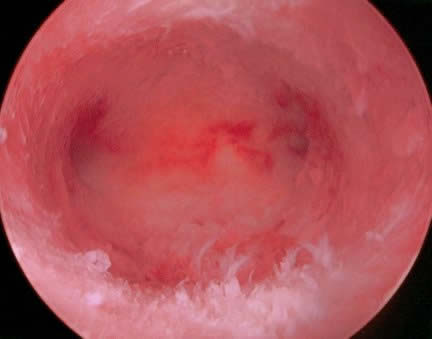Hysteroscopy

Hysteroscopy
Hysteroscopy is a technique for visually examining the cavity of the uterus using a long, thin telescope-like instrument (hysteroscope) that is inserted through the vagina and cervix. A small video camera attached to the end of the telescope gives the doctor a magnified view on a video monitor.
Hysteroscopy can be either diagnostic or therapeutic, or both. Therefore, it is sometimes referred to as diagnostic hysteroscopy (when used for viewing only) and sometimes as operative hysteroscopy (when used for treatment). It may be performed in the doctor’s office under local anesthesia, and a woman can return to her normal activities immediately that day or the next (if intravenous sedation is used).
As a diagnostic tool, hysteroscopy is useful in identifying causes of abnormal uterine bleeding and dysmenorrhea, such as fibroids, adhesions and polyps. It is also used to further evaluate abnormalities noted on certain diagnostic tests such as a hysterosalpingogram, sonogram or endometrial biopsy.
Surgical procedures to correct some of these problems can be carried out with operative hysteroscopy, using special instruments that fit through channels of the hysteroscope.
Operative hysteroscopy is also used to perform a minimally invasive procedure for women who choose sterilization as a means of permanent birth control, to remove foreign bodies such as abnormally situated IUDs, remove polyps or fibroids, remove defects that can impair getting pregnant, or sample/remove the endometrial lining to alleviate heavy bleeding or search for endometrial cancer.
References
- American Society for Reproductive Medicine. Laparoscopy and hysteroscopy: A guide for patients. Patient Information Series 2006. www.asrm.org/Patients/patientbooklets/laparoscopy.pdf.
- Indman P. Advanced Gynecological Solutions: Hysteroscopy. 2006. www.gynalternatives.com/hsc.htm.